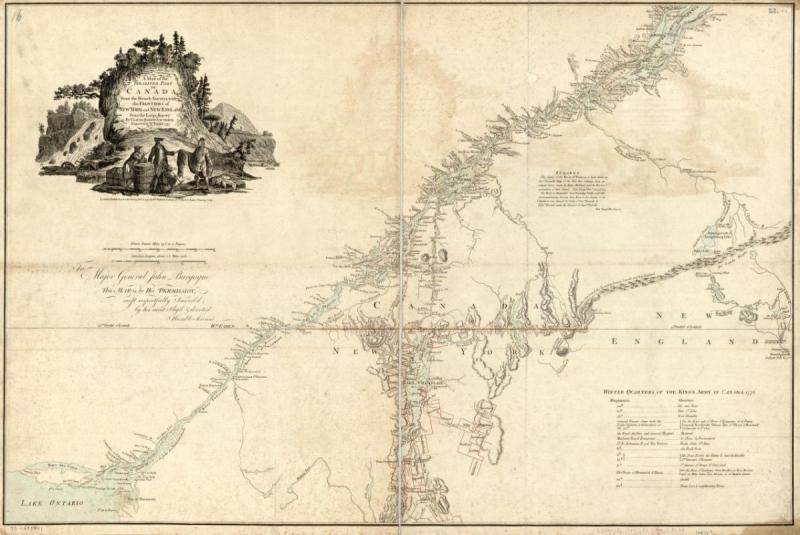Why is Article XI included in the Articles of Confederation?
“Canada acceding to this confederation, and adjoining in the measures of the United States, shall be admitted into, and entitled to all the advantages of this Union; but no other colony shall be admitted into the same, unless such admission be agreed to by nine States.” (Article XI)
Congress included a provision in the Articles of Confederation that would allow Canada to join the United States, should they choose to leave the British Empire. One might imagine that the close proximity of borders (as shown on this map from 1777) would have enticed the Canadian province to reject British rule and to unite with the colonies. However, most French Canadians distrusted the United States as it had a history of trying to conquer Canada and was known to insult Catholicism (the primary religion of French Canadians) and belittle the culture of Canadians.
References:
Mayer, Holly A. “Canada and the American Revolution,” Museum of the American Revolution. https://www.amrevmuseum.org/updates/reflections/canada-and-american-revolution (accessed July 30, 2018).
This map published in 1777 shows the Canadian-United States border from Lake Ontario along the St. Lawrence River to 45⁰ N. latitude, east to the Connecticut River, and northeast along the "Height of the land." Coverage of areas away from the boundary is focused upon the southern portion of Quebec and the northern portion of New York State, including a portion of the area which later became Vermont. Inscribed “To Major General John Burgoyne." Includes list of "Winter quarters of the King's Army in Canada, 1776." Use this link to access an expandable version of this map.

A map of the inhabited part of Canada from the French surveys, with the frontiers of New York and New England. Map. London, 1777. From Library of Congress Maps of North America, 1750-1789, 152. https://www.loc.gov/item/73695741/ (accessed July 30, 2018).
Public Domain
Public Domain is a copyright term that is often used when talking about copyright for creative works. Under U.S. copyright law, individual items that are in the public domain are items that are no longer protected by copyright law. This means that you do not need to request permission to re-use, re-publish or even change a copy of the item. Items enter the public domain under U.S. copyright law for a number of reasons: the original copyright may have expired; the item was created by the U.S. Federal Government or other governmental entity that views the things it creates as in the public domain; the work was never protected by copyright for some other reason related to how it was produced (for example, it was a speech that wasn't written down or recorded); or the work doesn't have enough originality to make it eligible for copyright protection.